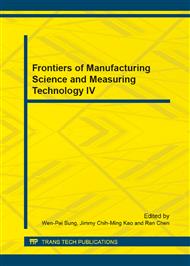p.1954
p.1960
p.1967
p.1972
p.1976
p.1981
p.1985
p.1989
p.1993
Study of Convective Heat Transfer Coefficient of High Pressure Water Descaling
Abstract:
In order to improving the product quality of hot rolled plate, the iron scale was removed by high pressure water descaling before hot rolling. The billet temperature dropped when a large amount of high pressure water injected on the billet surface. Establishing reasonably mathematical model of temperature field was very important, because it was related to formulate correctly rolling technology. High pressure water descaling convection heat transfer coefficient was an important parameter in the mathematical model of the temperature field. This paper calculated the high pressure water convection heat transfer coefficient by the method of numerical simulation, and regressed the mathematical model of the high pressure water coefficient of convective heat transfer by nonlinear regression method. The author used this mathematical model for finite element analysis in a steel mill, the results showed that the simulation results agreed with the experimental results, the mathematical model of high pressure water descaling convective heat transfer coefficient was reasonable.
Info:
Periodical:
Pages:
1976-1980
Citation:
Online since:
August 2014
Authors:
Price:
Сopyright:
© 2014 Trans Tech Publications Ltd. All Rights Reserved
Share:
Citation:


